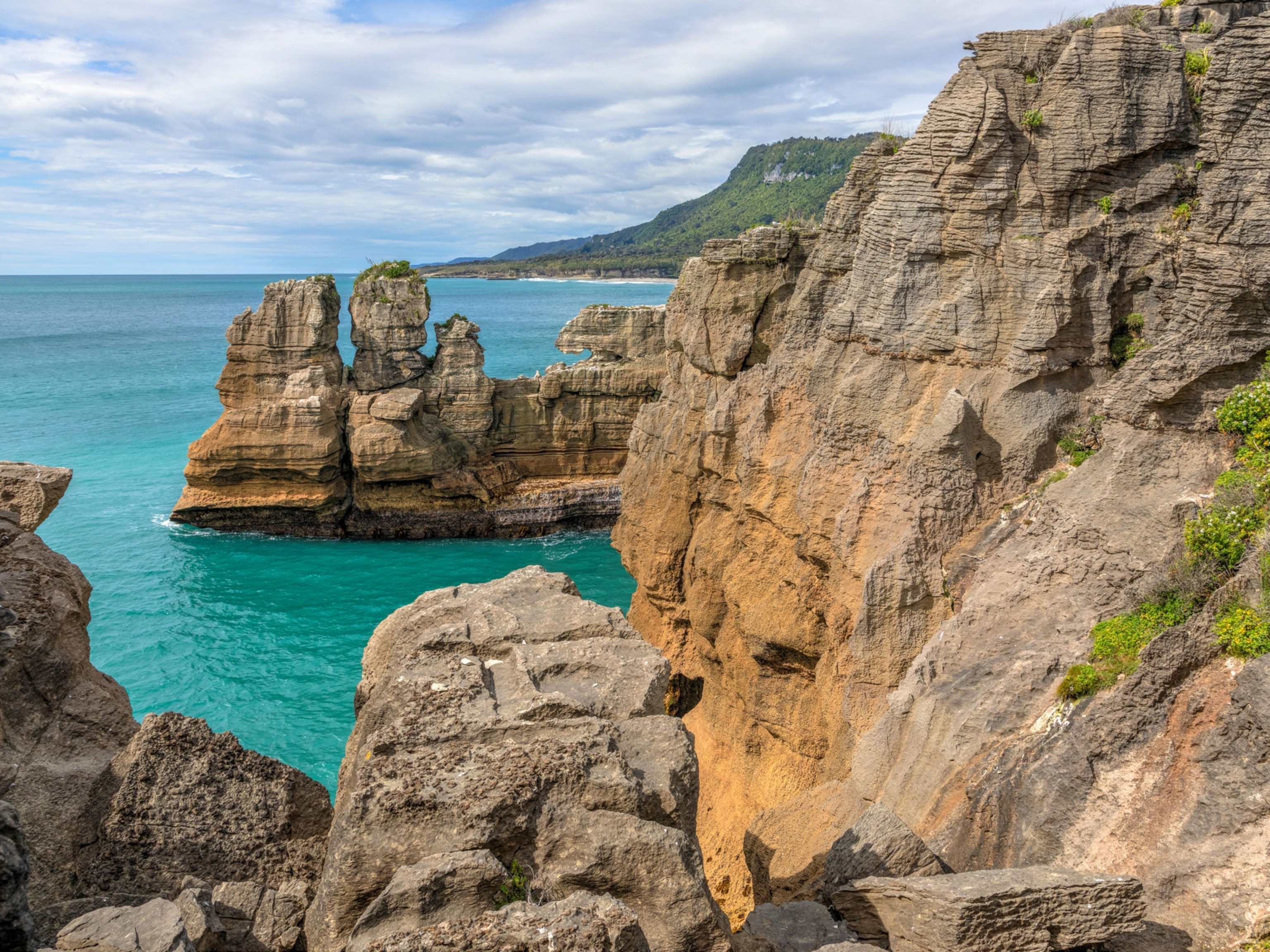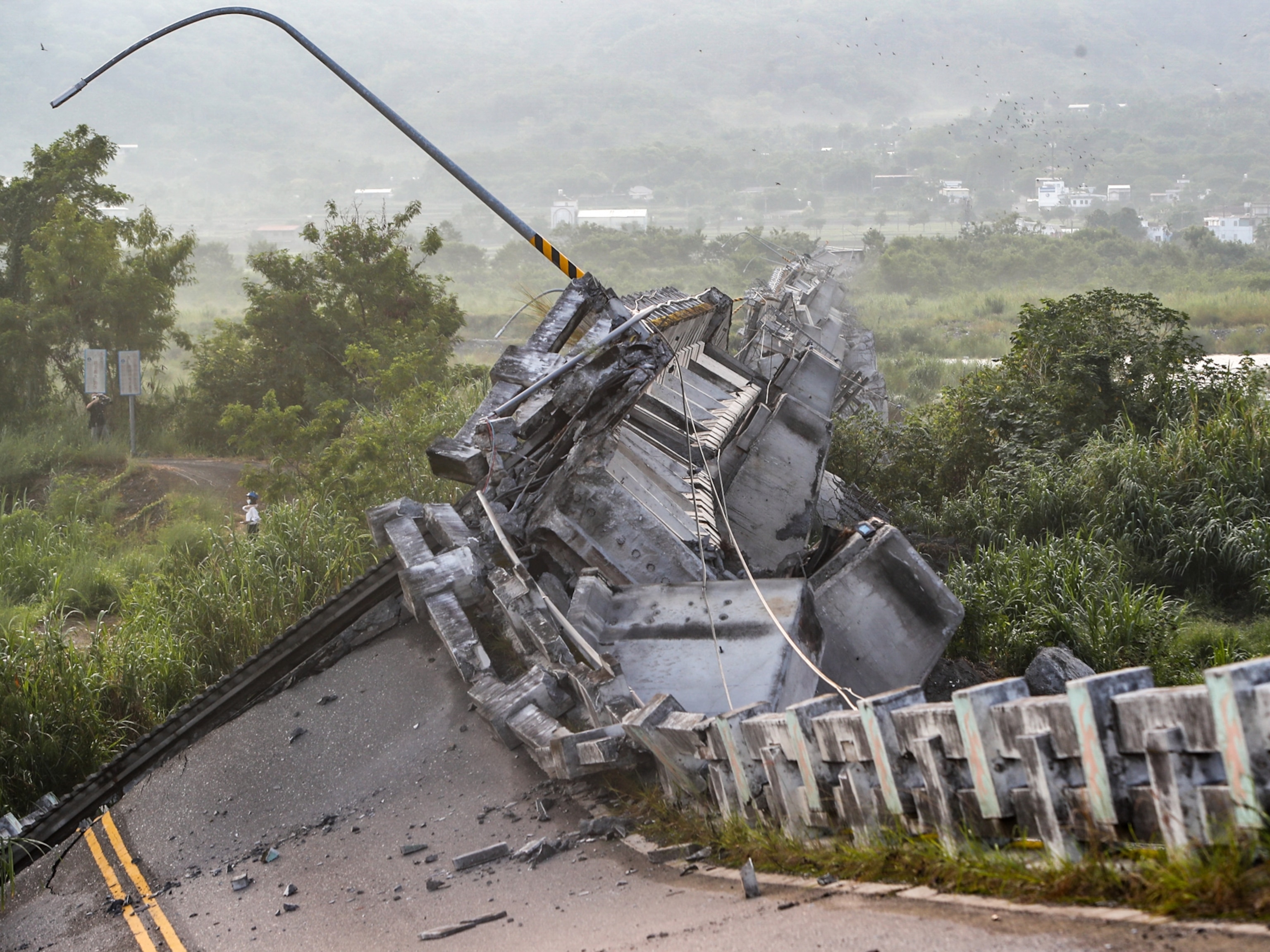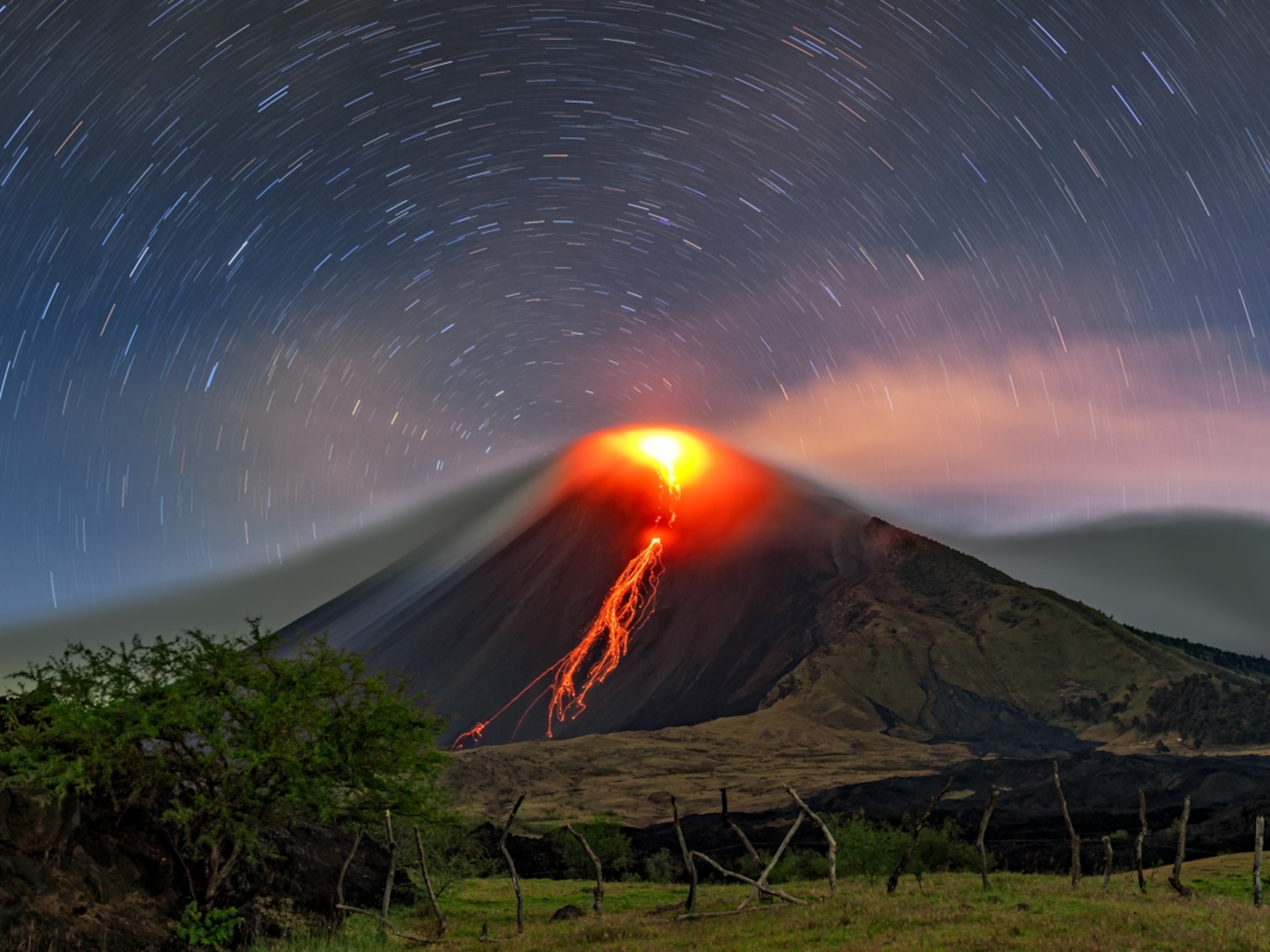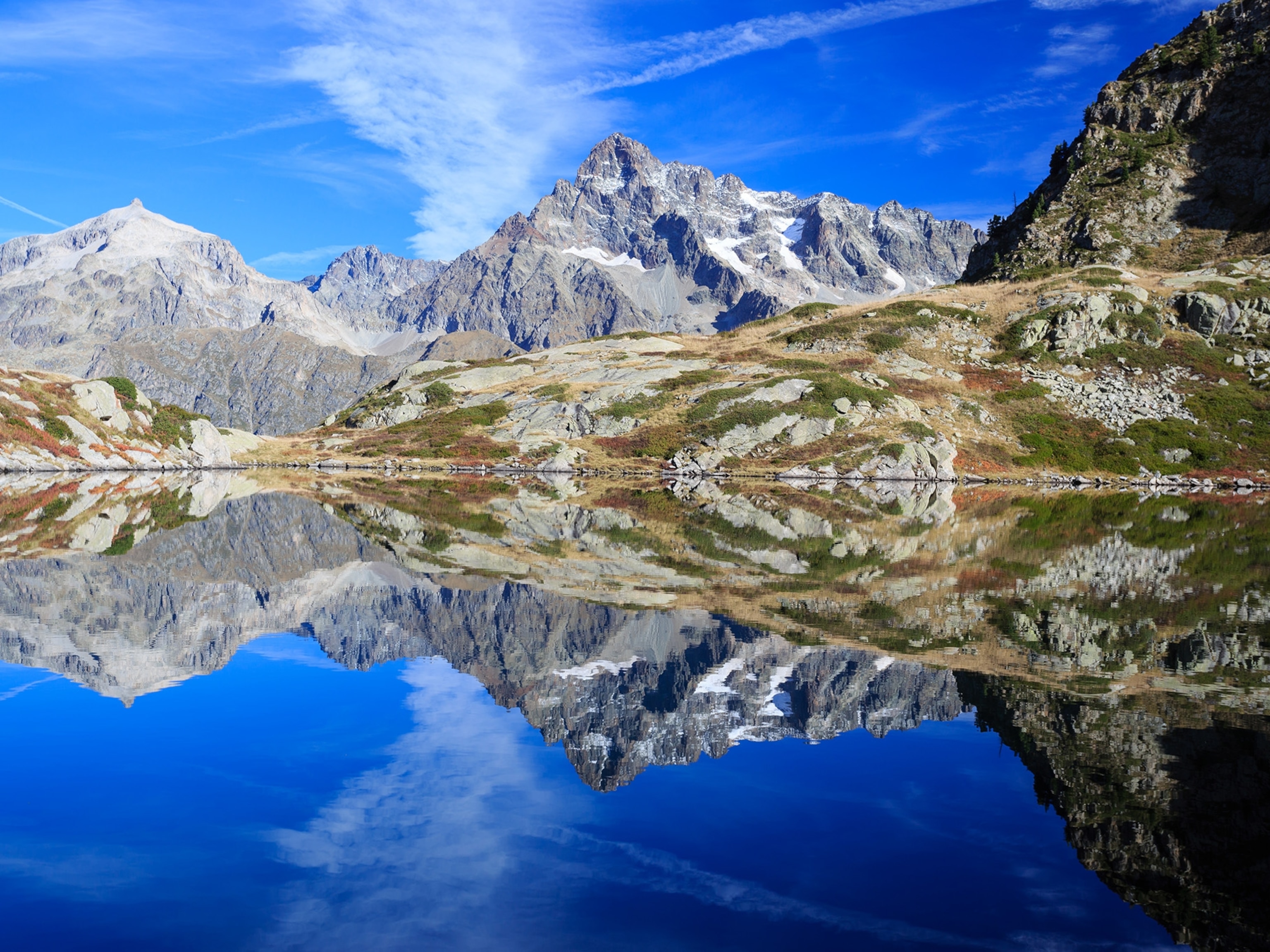
Earth’s mountains may have mysteriously stopped growing for a billion years
Starting about 1.8 billion years ago, the planet's continental crust thinned, slowing the flow of nutrients into the sea and possibly stalling the evolution of life.
If you could explore Earth’s surface a billion years ago, the most remarkable sight might be the world’s un-remarkability. There would be no trees or bugs, nor birds overhead. The only life is simple and small, a slimy oceanic soup.
And a new study published in Science points to yet another feature that may be missing: towering mountains.
The restless tectonic plates of modern Earth shift continuously, in a slow-motion dance that reshapes the surface of our planet. Collisions between continents thicken the crust and heave up mountains, such as the Himalayas, that reach ever higher into the skies.
But clues etched into tiny zircon crystals that formed deep in the Earth suggest that plate tectonics didn't always work the same way it does today. In the eon between 1.8 and 0.8 billion years ago—a time dubbed the "boring billion"—the continents seemed to grow progressively thinner. The exact driver of this continental slimming is unknown. But at its most slender, the land was about a third thinner than it is today—a change that researchers suggest may have been caused in part by a slowdown in plate tectonics.
The researchers also posit that this thin crust could have delayed the evolution of life as we know it. Puny mountains would have slowed erosion of the planet’s rocks, limiting the supply of life-giving nutrients for creatures in the oceans.
“It’s a famine in the oceans at that time,” says Ming Tang, a geochemist at Peking University, China, and first author of the new study. But soon after continents began to thicken again, a flush of nutrients seemed to drive evolution to ever larger and more complex life.
“This paper is bringing up more questions than answers,” says Christopher Spencer, a geochemist specializing in tectonics at Queen’s University, Canada. But overall, he says, the work could provide a “springboard” to better understand how our modern world came to be.
Reading the rocks
Tang was analyzing granite rocks from the Himalaya of southern Tibet when he noticed a curious pattern in their crystals of the mineral zircon. These tiny time capsules form as magma cools within the Earth, recording the chemical fingerprints of ancient conditions on our planet—and they're nearly indestructible. Researchers have found zircons that formed soon after Earth’s birth nearly 4.4 billion years ago.
Tang realized that the chemistry of the zircon crystals from the Tibetan samples changed in step with the continental thickness at the time their parent rocks formed.
Scientists previously determined continental thickness by looking at the relative amounts of the elements lanthanum and ytterbium in the rocks, Tang says. But using the rock itself to peer into the past is difficult because few whole rocks have survived since Earth's infancy, leaving gaps in the geologic history.
“It’s been described [as] like reading a novel with three-quarters of the pages missing,” says Peter Cawood, a geologist at Monash University, Australia, who was not involved in the new study. The everlasting quality of zircons, however, allows scientists to glimpse a much more complete story of our planet’s past.
Tang and his team developed a new way to use the zircons to estimate continental thickness: They found that the amount of the element europium in the crystals changed along with the thickness measured using prior rock chemistry methods.
Tang and his team published their new model last year in Geology, then set out to use this new tool. They accrued data from previously studied zircons from around the globe—more than 14,000 in all—and plotted the chemical changes over time. A striking pattern emerged: a steady thinning of the crust throughout the so-called boring billion.
“We didn’t expect it,” Tang says of the pattern. The thinning coincided with the disappearance of many other markers for ancient mountain building that had previously been identified in the rock record. The strontium composition, which is related to erosion, starkly shifted. Similarly, the elements molybdenum and uranium all but disappeared from marine rocks. And phosphorus-rich rocks grew scarce.
“All these can be explained by our model with much flatter continents,” Tang says.
Gooey continent cake
Though the exact process behind this crustal winnowing remains uncertain, Tang and his colleagues contend that the change could come, in part, from a slowdown in plate tectonics. Without the continuous upward march, mountain peaks would slowly flatten as erosion by wind and water worked away at the rocks.
The team suggests that this slowdown resulted from changes in how heat was distributed on Earth's surface during the boring billion, when the continents largely clustered in a single supercontinent.
The supercontinent known as Nuna began forming around 2.1 billion years ago. Then, after a minor rearrangement, the supercontinent known as Rodinia took shape, starting some 1.2 billion years ago and lasting nearly a half billion years longer. For more than an eon, the landmass formed a nearly unbroken blanket over a large swath of the planet, trapping in the heat deep below the surface.
Tang suggests that the excess heat beneath the supercontinent would also produce a cooldown under the oceanic crust, affecting the march of tectonic plates.
Slowed tectonics, however, doesn’t entirely square with the geologic record, according to Spencer of Queen’s University. Though the plates weren’t making tremendous leaps around the globe, there was still magmatic activity; nearly 40 percent of North America formed during this time period. If you draw a line between Southern California and Labrador, everything to the southeast took shape between 1.8 and 1 billion years ago, Spencer says—and that couldn’t have happened without actively churning tectonics.
Apart from the question of a tectonics slowdown, the idea of the supercontinent blanket raises another possibility: that excess heat building underneath could have weakened the overlying rocks. Such a phenomenon would cause the surface to flatten, since hot rocks can’t support high mountain ranges.
“It’s a bit like a gooey cake,” Cawood says. As long as the sugary structure stays cool, it can hold its shape. Heat it up, and it starts to ooze.
“I think that’s really the crux of the paper,” Spencer says. Perhaps the thinning crust isn’t so much due to a quieting of the tectonic movements that build mountains as to a change in the way these processes worked.
The combination of excess heat and a thin crust could explain an unusual series of rocks that formed during the collisions that produced Rodinia, says Andrew Smye, a metamorphic geologist at Pennsylvania State University who was not part of the study team. These rocks seem to have formed at temperatures hotter than expected for the depth—but a hot, thin crust could account for that.
Though Tang argues that both intermittent tectonics and weakened crust were likely in play, he says there’s still much to learn about what our planet looked like eons ago. His team’s work adds even more intrigue to the boring billion, and underscores a point some scientists have brought up in the past: Perhaps this age may have not been so dull.
“I don’t think it was boring. It wasn’t quiet or quiescent,” says Cawood, who instead coined the term “Middle Age.” But he notes that the name is irrelevant: What’s important is that the period was markedly different.
"Clearly there's something interesting going on here," Smye says.








